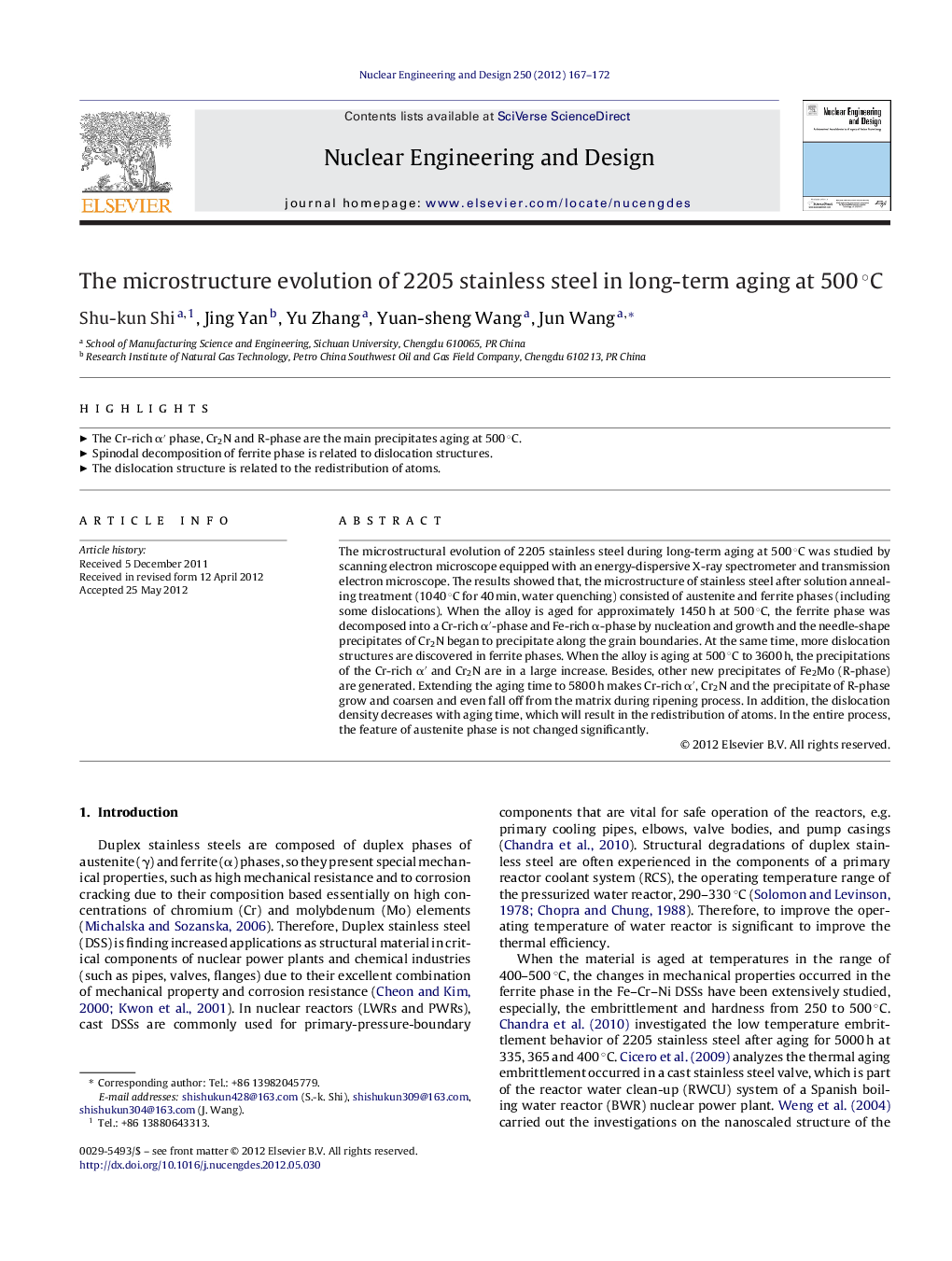| Article ID | Journal | Published Year | Pages | File Type |
|---|---|---|---|---|
| 296988 | Nuclear Engineering and Design | 2012 | 6 Pages |
The microstructural evolution of 2205 stainless steel during long-term aging at 500 °C was studied by scanning electron microscope equipped with an energy-dispersive X-ray spectrometer and transmission electron microscope. The results showed that, the microstructure of stainless steel after solution annealing treatment (1040 °C for 40 min, water quenching) consisted of austenite and ferrite phases (including some dislocations). When the alloy is aged for approximately 1450 h at 500 °C, the ferrite phase was decomposed into a Cr-rich α′-phase and Fe-rich α-phase by nucleation and growth and the needle-shape precipitates of Cr2N began to precipitate along the grain boundaries. At the same time, more dislocation structures are discovered in ferrite phases. When the alloy is aging at 500 °C to 3600 h, the precipitations of the Cr-rich α′ and Cr2N are in a large increase. Besides, other new precipitates of Fe2Mo (R-phase) are generated. Extending the aging time to 5800 h makes Cr-rich α′, Cr2N and the precipitate of R-phase grow and coarsen and even fall off from the matrix during ripening process. In addition, the dislocation density decreases with aging time, which will result in the redistribution of atoms. In the entire process, the feature of austenite phase is not changed significantly.
► The Cr-rich α′ phase, Cr2N and R-phase are the main precipitates aging at 500 °C. ► Spinodal decomposition of ferrite phase is related to dislocation structures. ► The dislocation structure is related to the redistribution of atoms.
